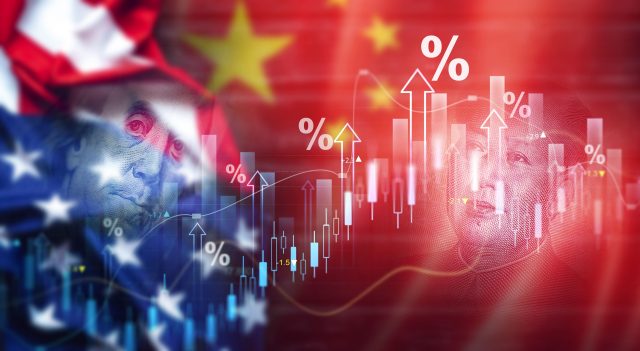
The recent agreement between the United States and China on the supply of rare earths – as well as on trade duties – represents a significant event in the context of international relations and global economic and military security. It is important to analyze the strategic significance of the agreement, its commercial and diplomatic implications and the structural vulnerabilities of the US industrial and defence apparatus resulting from dependence on Chinese supplies of critical elements such as rare earths, recently also at the center of the agreement signed by Trump with Kiev.
FROM TENSIONS TO AGREEMENT
The so-called rare earths (a group of 17 chemical elements essential for the production of advanced technologies) are at the center of a delicate interdependence between the United States and China. On June 10, US President Donald Trump announced through the social network Truth the reaching of an agreement with the Chinese government regarding the supply of rare earths, the application of new trade duties and the reopening of visas for Chinese students. This agreement, which follows months of trade tensions, marks a major step forward in bilateral dialogue and reveals the growing use of critical resources as a lever in international negotiations.
WHAT’S IN THE AGREEMENT? ECONOMIC AND DIPLOMATIC ASPECTS
According to official communications from President Donald Trump, the recently reached agreement with China includes Beijing’s commitment to guarantee in advance the supply of rare earths, strategic resources that are key to the American technology and military industry. The agreement also introduces a new tariff structure, which provides for the imposition of 30% duties on Chinese imports to the United States, while American exports to China will be subject to 10% tariffs. Among the key elements of the agreement is also an opening in the academic field, with the resumption of visas issued to Chinese students interested in attending American universities. Trump has emphasized this aspect, highlighting his appreciation for the presence of young Chinese people in American campuses. The agreement has produced immediate positive effects on financial markets, especially on European stock exchanges, which have reacted with optimism, confirming the systemic value attributed to the détente between the two powers. From Beijing, Vice Premier He Lifeng stressed the urgency of strengthening bilateral dialogue, reducing misunderstandings and consolidating stable and lasting cooperation, while also recognizing the importance of keeping effective and constructive channels of communication open.
A STRUCTURAL VULNERABILITY
Beyond the economic aspects, the agreement is of strategic importance as it highlights the vulnerability of US supply chains, particularly in the military field. Rare earths – as recalled in recent days by several international media – are essential components of advanced military technologies, including missiles, radars, submarines, F-35 fighters and the future F-47. The F-35s, for example, contain over 400 kg of REE (Rare Earth Elements) each, while the Virginia-class submarines and Tomahawk missiles also depend on these materials. China, according to data reported by the international press, currently controls about 90% of global rare earth refining and owns 70% of total production. Furthermore, it holds 44 million tons of reserves, compared to the almost 2 million of the United States. Despite investments by the Pentagon (over 439 million dollars since 2020 to develop domestic supply chains), the technological and infrastructural gap remains significant.
THE GEOPOLITICAL LEVERAGE OF RARE EARTH ELEMENTS
China’s dominance in the rare earth sector represents a concrete geopolitical lever that can be used to influence trade negotiations, diplomatic agreements and even the US strategic posture. Their non-substitutability in many military applications makes US dependence particularly critical. Beijing has repeatedly used the weapon of export restrictions to strengthen its position in multilateral dialogues, demonstrating a clear awareness of the coercive potential of its superiority in this area. The US-China agreement on rare earths represents a temporary easing of trade tensions, but at the same time highlights a profound fragility in the US production and military structure. While the agreement could strengthen bilateral cooperation in the short term, it also underscores the urgency for Washington to diversify its sources of supply and develop autonomous industrial capabilities. Rare earths are not just a commercial issue: they are a strategic node where national security, technological competitiveness and foreign policy intertwine.



 Subscribe
Subscribe